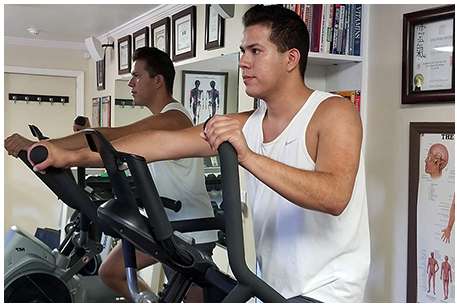Fatigue sets in if the cardiovascular system is not capable of delivering oxygen to the cells, where food is turned to energy (ie. If someone is not in shape.).

Menu

Aerobic Exercise is any sustained, rhythmic movement of low to moderate intensity that uses large muscles and is continued for more than 15 minutes. Activities include any motion that creates a demand on the heart and lungs to deliver oxygen to the bloodstream.
The main fuel for aerobics are glucose (stored sugars from carbohydrates) and fatty acids (stored fat from foods). Amino acids, which result as the body digests proteins, are used very sparingly as aerobic energy. Their job is to build and repair muscles and cells.
Fuels medium distance, sustained workouts, usually under 20 minutes.
Fatigue sets in if the cardiovascular system is not capable of delivering oxygen to the cells, where food is turned to energy (ie. If someone is not in shape.).


5-10 mins
10-20 mins
Average
15-45 mins
High
30-60 mins
Those with a low fitness level can benefit from training intensities as low as 40-60% max heart rate. All others should aim for heart rates appropriate for their fitness level and goals between 55-90% max heart rate
Target Heart Rate =(220 – age – resting heart rate) X (% intensity or % max heart rate) + resting heart rate
Example: 40 year old, resting H.R. of 90 bpm, working at 60% max heart rate.
Target Heart Rate = (220 – 40 – 90) X (60%) + 90
= 90 X (60%) + 90
= 54 + 90
= 144 bpm